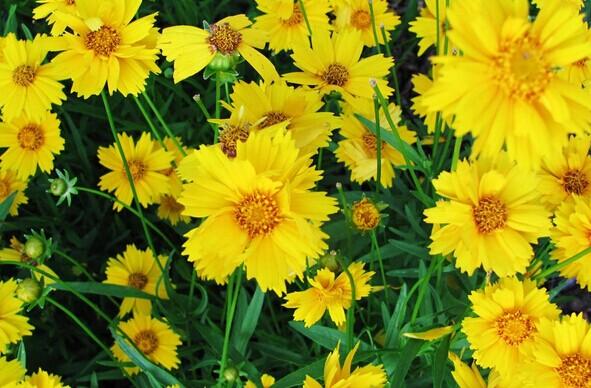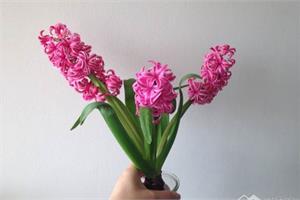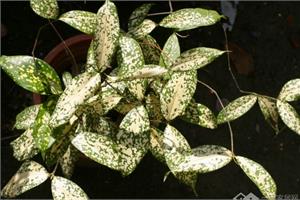Detailed explanation of the breeding methods of Chrysanthemum morifolium
The leaves of Chrysanthemum morifolium are many opposite, sparsely alternate, entire, lobed or cleft. Flowers solitary or sparse panicles, involucre in two rows, 3 in each row, basally connate. Ligulate flowers in 1 row, broadly ligulate, yellow, brown or pink. Tubular flowers yellow to brown. Golden rooster chrysanthemum is resistant to cold and drought, lax requirements on soil, like light, but resistant to semi-shade, strong adaptability, and strong resistance to sulfur dioxide. Today, I would like to briefly introduce the breeding methods of Chrysanthemum morifolium.

Golden rooster chrysanthemum is easy to cultivate and can often reproduce on its own. Sowing or ramet propagation are mostly used in production, and cuttage propagation can also be carried out in summer. Sowing and reproduction are generally sown indoors in early spring. Usually select the sowing basin or wooden box with diameter 30cm and depth 5cm, cover the drainage hole with broken tiles, then add coarse gravel 1ax 3 in turn, coarse gravel culture soil 1max 3, sowing soil lash 3. Then, the soil surface is compacted and flattened with wooden strips, and the soil is separated from the basin along the 1cm. After soaking the basin soil with the "basin immersion method", the basin is put forward and sowed after all the moisture is infiltrated.
When sowing, open the seed bag and spread the seeds evenly into the basin. Or mix the seeds into the fine sand and sprinkle them evenly into the basin. After sowing, cover a thin layer of fine soil, then cover the disk with glass, and then cover the glass with newspaper to reduce the evaporation of water. Before the seeds sprout, keep the soil moist, do not make the seedling bed dry and wet, or too dry and wet. In the morning and evening, the glass should be opened for a few minutes, ventilated and covered during the day. After the seed is germinated and unearthed, the mulch should be removed in time to see the light step by step, and when 2 real leaves are grown, they will be transplanted.
The management of golden rooster chrysanthemum is relatively simple. When the seedlings grow true leaves, apply nitrogen fertilizer once. It can be transplanted when it grows to 2 Mel 3 true leaves. After one transplant, it can be planted in the flower bed. After planting, water should be watered in time so that the root system is closely connected with the soil. During the growing period, 2 Mel liquid fertilizer was applied three times, and phosphorus and potash fertilizer were used together with nitrogen fertilizer.
The soil planted with Chrysanthemum morifolium should be kept dry and wet at ordinary times, and there can be no waterlogging. Drainage and waterlogging prevention should be carried out in time after rain. High temperature, high humidity, poor ventilation, aphids and other diseases and insect pests should be sprayed in time. If you want to make the golden rooster chrysanthemum blossom more, you can pick the residual flowers after the flower, and chase the fertilizer once from July to August, so that the National Day can blossom.
Chrysanthemum chrysanthemum achene is born in a head, black, without crown hair, and ripens from August to October. The seed harvest site is the head of Chrysanthemum morifolium. Usually between August and October of each year, most ripe heads of achenes are cut, dried and placed in a dry, cool place to concentrate on impurity removal and clear seeds. The seed size of Chrysanthemum morifolium is larger. Mostly use moisture-proof paper bag packaging.
The seeds collected by grading should be graded on the premise of ensuring the cleanliness of the species, normal water content and no foreign body pollution. The germination rates of primary, secondary and tertiary seeds were ≥ 98%, 95% and ≥ 92%, respectively. When seeds at all levels are used, their germination rate is allowed to be lower than 5% of the corresponding standard. With the extension of storage time, the standard of germination rate should be lowered accordingly.
The above is the editor to share with you the breeding methods of Chrysanthemum morifolium. I hope it will be helpful to you!
- Prev

The treatment of hyacinth flowers causes the rotting root of hyacinth in water culture
The treatment of hyacinth flowers causes the rotting root of hyacinth in water culture
- Next

The basic knowledge of star millennium wood how to cultivate star millennium wood
The basic knowledge of star millennium wood how to cultivate star millennium wood
Related
- Wuhan Hospital Iron Tree Blooming Result Was Instantly Frightened by the Gardener Master
- Which variety of camellia is the most fragrant and best? Which one do you like best?
- What is the small blue coat, the breeding methods and matters needing attention of the succulent plant
- Dormancy time and maintenance management of succulent plants during dormancy
- Minas succulent how to raise, Minas succulent plant pictures
- What are the varieties of winter succulent plants
- How to raise succulent plants in twelve rolls? let's take a look at some experience of breeding twelve rolls.
- Attention should be paid to water control for succulent plants during dormant period (winter and summer)
- Watering experience of twelve rolls of succulent plants
- Techniques for fertilizing succulent plants. An article will let you know how to fertilize succulent plants.

